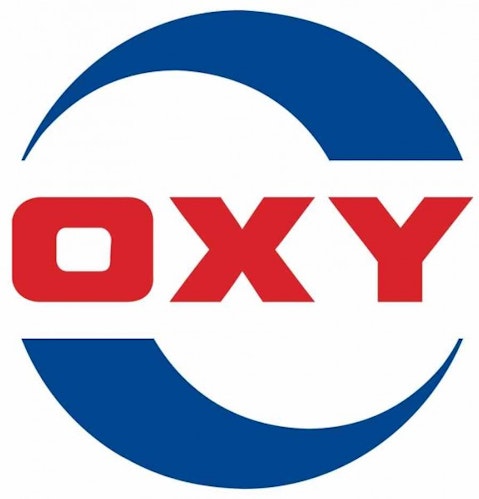Oil extraction by hydraulic fracturing, or “fracking,” has undoubtedly transformed the landscape of the American energy market (see The Definitive Guide to Fracking), put the United States on the fast track to energy independence, and thrust the names of shale formations such as the Marcellus, the Bakken, and Eagle Ford to the forefront of public consciousness. Soon, the sun-soaked, star-studded counties of Southern California may supplant the plains of North Dakota as the latest and greatest object of the shale energy land rush.
Recent headlines in shale energy involve the previously sparsely developed Monterey formation, which stretches in an arc along the coastal regions of southern California, including Kern, Orange, Santa Barbara, Ventura and Monterey Counties. A somewhat overlooked July report by the United States Energy Information Administration estimating readily recoverable shale oil and gas reserves in the country states that the Monterey formation boasts about 15.5 billion barrels of oil—nearly 64% of the total shale oil reserves in the United States. This quantity exceeds the total proved oil reserves of China or Brazil and is four times greater than the reserves of the Bakken shale formation.
There are three immediate questions: What factors (if any) may impede development? And which companies are positioned to profit most from a Golden State oil renaissance? In a spirit similar to that of our market-beating strategy (see the details here), is it possible for investors to gain from this situation?
Companies have been extracting small quantities of oil from the Monterey shale since late 1800s. Low recovery rates hamstrung large-scale development until the recent convergence of historically high oil prices and the implementation of relatively new and innovative extraction techniques—especially hydraulic fracturing—made recovery of the Monterey reserves economical. The EIA’s mid-summer report on U.S. oil and gas reserves turned the heads of only a select group of geologists and industry insiders. Recently, however, the formation is attracting increasing attention from industry experts, policy makers, major companies, bankers, and environmentalists.
Companies Exploring the Formation
The major players in the Monterey formation today include: Venoco (NYSE: VQ), Occidental Petroleum Corporation (NYSE: OXY), Plains Exploration & Production Company (NYSE: PXP), Zodiac, Gasco, Berry Petroleum (NYSE: BRY), and National Fuel and Gas (NYSE: NFG).
Venoco, a twenty-year old, little known energy company recently taken private by co-founder Tim Marquez, is the second largest player to date with about 312,000 gross acres in the region. Venoco’s development interests are almost entirely in the Monterey region, and its recent developments have created some local controversies with residents and environmentalists. Although Venoco does not own as much acreage as Occidental and has yet to produce commercially viable developments, it has been the most successful thus far in penetrating the fairly diverse rock formations of the Monterey and claims to be “encouraged by the scientific information collected thus far.”

Occidental Petroleum also has a large stake in the Monterey shale, although its stock of assets is significantly more diverse than the highly concentrated stock being developed by Venoco. OXY is the largest oil and gas producer in the state of California and is headquartered in Los Angeles. More than half of its production is sourced from the United States including many of the better-known major shale formations in the country.
The company owns 1.7 million acres of land in California, of which 1.2 million are in the Monterey region and about 900,000 net acres contain shale formations. This indicates substantial potential for development within the Monterey shale. It has 20 years of experience working in southern California and has continued large-scale production long after other major companies left the region.
OXY may soon be rewarded for its patience.
As of 2011, the company planned to spend $6.3 billion over the next four years developing acreage, but not necessarily on shale plays. In addition to its massive land interests, Occidental boasts the advantages of its large size and knowledge of how to operate in a state like California, with its popular green initiatives and unique regulatory environment.
Especially in light of the political controversies surrounding fracking, OXY’s substantial monetary, economic, and political clout may prove a unique advantage over competitors in the region. However, the company is taking a far less proactive approach to penetrating the shale formation than Venoco, seemingly content to build upon more reliable conventional reserves.
A number of other smaller players also have stakes in the region. These include Zodiac, Gasco, Plains Exploration, Berry Petroleum, and National Fuel and Gas. Although Occidental is the major presence in the region based on acreage, the company’s stake is relatively small compared to its total enterprise value, so the positive impact of development in the region will have a more modest effect on its share price than it would on that of some of the smaller operators.
The companies with the most leverage from the Monterey play are Gasco, Zodiac and Venoco, for which acres/enterprise value is above 100. Because the last two are private companies, individual investors with an eye on profiting from development in the Monterey should focus their attentions on Gasco or, for the more risk averse, Occidental.

A Forthcoming Political Battle
The Obama administration occupies a policy space somewhere between benign apathy and tentative support of the development of American shale oil and gas deposits. With the fairly straightforward trade-off between hydraulic fracturing’s potential negative impact on the environment and the positive impact of drilling on both national security and economic growth, the latter choice seems much more politically palatable given the Obama administration’s current policy priorities and the still relatively weak employment growth.
Nevertheless, California has a reputation as a vigilant guardian of the environment and is often portrayed as a state at the forefront of combating global warming. Despite compelling reasons for developing the Monterey shale, oil and gas companies should expect a struggle with environmentalist groups and should expect to be subjected to more stringent extraction regulations than in North Dakota and Texas.
The state’s cap-and-trade program and related climate change legislation (although not focused on hydraulic fracturing) will also impact oil and gas companies’ cost basis for developing Monterey shale assets. Tupper Hull of the Western States Petroleum Association also expressed concerns that although the shale formation contained major reserves, the state of California also boasts about 10 billion barrels of oil that can be recovered by conventional means. It is questionable whether the state will be amenable to fracking in shale regions as long as conventional reserves are still available for extraction in large quantities.
There are additional concerns to address before development of the scale appropriate for the quantity of estimated reserves can occur. The area is relatively more populous than major developments in Texas and North Dakota, compounding concerns about water contamination, further environmental degradation, and pollution related to building out the supportive infrastructure needed to transport extracted oil and gas to existing or newly built refineries and then to end users. Labor is also a concern for future development. In North Dakota, wages have skyrocketed as companies try to attract laborers to the relatively desolate plains of the Dakotas and the similarly desolate lifestyle of an unskilled rig worker.
Until very recently, the state of California did not even regulate fracking. Venoco, an energy company exploring the Monterey formation and a major player in the region based on acreage owned, drilled two wells utilizing the hydraulic fracturing technique in the summer of 2012 without even alerting state regulators. To the dismay of local residents and environmentalists, when state energy officials discovered the wells, they were legally prohibited from taking any action. Although California has passed regulations since this incident, environmentalists criticized the new laws for lacking sufficiently strong environmental safeguards and enforcement mechanisms. Thus, infrastructure and regulation need to be built out further before major sustainable development can occur in the Monterey region.
Golden State Oil Renaissance
In addition to government regulation, geology may be another impediment. According to Don Clark of the American Association of Petroleum Geologists, “What people are looking for is, ‘Is there a secret to opening this thing up?’ To my knowledge, nobody has really done that yet.” Clarke says this is related to the highly variable stratigraphy and composition of the formation in contrast to the fairly uniform composition of Bakken and Eagle Ford formations.
California is already the third-largest largest oil producing state in the U.S., thanks in part to the natural “fracking” caused by periodic earthquakes breaking up shale formations and releasing oil and gas. The state boasts 10 billion barrels of conventional reserves (although some can only be extracted through offshore drilling which is heavily restricted) and now may be home to an additional 15.5 billion barrels of shale oil—in addition to large quantities of natural gas.
Nevertheless, there is reason to temper undue optimism: Hull expresses the difficulties of extracting these reserves: “You have to jump through a lot of hoops to produce in [California].” Regulation aside, the economic benefits of development for both California and the United States as a whole would be substantial. And the necessary extraction technology and high price level needed to make extraction economical are there. It is likely just a matter of time (perhaps a long time) before large-scale development is undertaken; the potential reserves of the formation are simply too large and the potential economic impact too substantial for the oil to be left in the ground. To read more on this subject, continue reading “10 Ways to Invest in Fracking.”
Disclosure: I have no positions in any of the stocks mentioned above






